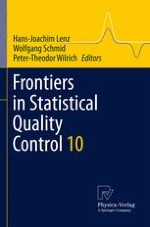2012 | OriginalPaper | Chapter
Uncertainty and Quality Control
Author : Elart von Collani
Published in: Frontiers in Statistical Quality Control 10
Publisher: Physica-Verlag HD
Activate our intelligent search to find suitable subject content or patents.
Select sections of text to find matching patents with Artificial Intelligence. powered by
Select sections of text to find additional relevant content using AI-assisted search. powered by
Abstract
‘Crisp sets’, ‘fuzzy sets’, ‘rough sets’, ‘grey sets’, ‘fuzzy rough sets’, ‘rough fuzzy sets’, ‘fuzzy grey sets’, ‘grey fuzzy sets’, ‘rough grey sets’, ‘grey rough sets’, and now ‘affinity sets’. My goodness! Is there anybody around who can enlighten me, i.e., help me to see a clear pattern in this set of sets, allegedly providing powerful tools to model various kinds of uncertainty?
